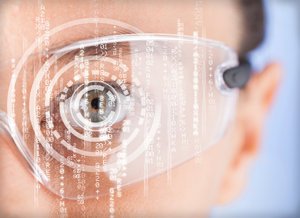
Banks Try On Wearables
Brought to you by Bryan Cave Leighton Paisner

 Having the world at your fingertips—that’s been a common description for the advent of the Internet. But now there’s talk of technology taking on a different part of the hand: the wrist. The growing popularity of wearable technology is causing some banks and other financial companies to try on systems for this twist on the ticker. How far banks ultimately go will be tested by time.
Having the world at your fingertips—that’s been a common description for the advent of the Internet. But now there’s talk of technology taking on a different part of the hand: the wrist. The growing popularity of wearable technology is causing some banks and other financial companies to try on systems for this twist on the ticker. How far banks ultimately go will be tested by time.
Modern wearables have been on the market for at least a couple years in forms such as glasses and fitness bands, but analysts are crediting more recent interest from banks and other companies to the introduction of the Apple Watch. Apple officially announced prototypes last September, and the product released into the market on Friday, April 24. It has been reported that more than 1 million of the devices were pre-ordered, and some models are on back order until June. As noted in a March 2015 article in The Economist on the wearables trend, Apple has a history of popularizing existing technologies: first with the Macintosh computer in 1984, then the iPod in 2001, the iPhone in 2007 and the iPad in 2010. And it may very well do the same for wearable technology.
Not surprisingly, much of the banking foray into wrist wearables so far—which is still small but growing daily—has involved partnering with software companies or labs to create banking apps compatible with the Apple Watch. In March, New York-based Citigroup was the first banking company to announce an Apple Watch app, Citi Mobile Lite. On the day the Apple Watch released, TD Bank Group in Toronto, Canada, publicized the launch of an Apple Watch app that will be an extension of its current iPhone app. But it’s not just national banks participating. The Greater TEXAS Federal Credit Union and the Alabama Teachers Credit Union are among the early launchers of “SmartwearApps” for the Apple Watch.
Banks and other financial companies also are branching out beyond Apple Watch. Notably, Wright-Patt Credit Union in Beavercreek, Ohio, has developed an Android Wear app that will automatically sync a user’s device with the latest version of its existing banking app. Further, American Express in New York is teaming up with Jawbone, a consumer technology and wearable-device company, to give U.S. customers the ability to tap to pay with a Jawbone fitness tracker.
Banks introducing wearables generally have given similar reasons for entering the market, such as:
- Customer Convenience. Wearables give consumers quick, easier access to some of their most-used banking features, including the ability to check balances and transaction history, receive payments alerts and locate branches. Some apps even have voice-recognition technology. There are banks that see smartwatch apps enhancing customer loyalty, particularly among millennials, who are expected to use wearables more.
- Increased Profits. This month Fortune Magazine noted that the growth of mobile payments is good for banks and credit card companies because they encourage spending, citing a CNBC study that mobile payments could result in spending increases of 12 to 18 percent. Smartwatch apps may be a key part of the wave.
- Fraud Reduction. Wearable devices like the Apple Watch are equipped with near-field communication (NFC) payments technology, touted as a secure payments system less vulnerable to attack. As wearable technology also is being noted as a means for consumers to track personal data, banks potentially accessing the collected data to verify customer identity in transactions has been cited as a possible benefit.
But the very reasons banks are giving wearables a try are among the ones that may prevent them from catching on in the industry large scale: despite the convenience of smart watches, for example, customers may not see a value long term in a device that, at least at this point, does only some of what the ubiquitous smartphone already can do. Twenty percent of Americans currently own some form of wearable device, PricewaterhouseCoopers noted in connection with its report, The Wearable Future, released in October 2014. Although this number is expected to rise, it is not yet clear by how much. The level of popularity of products such as the Apple Watch and Android Wear likely will determine if more banks invest in wearables. Moreover, if the payments technology associated with the devices proves not to be as secure as expected, banks may be less inclined to see a value in wearables. These are all indicators to watch for.

